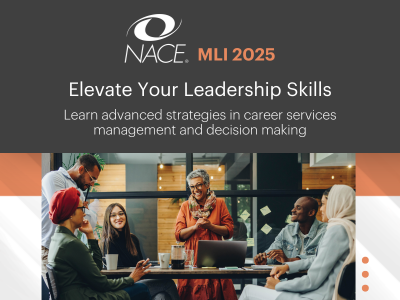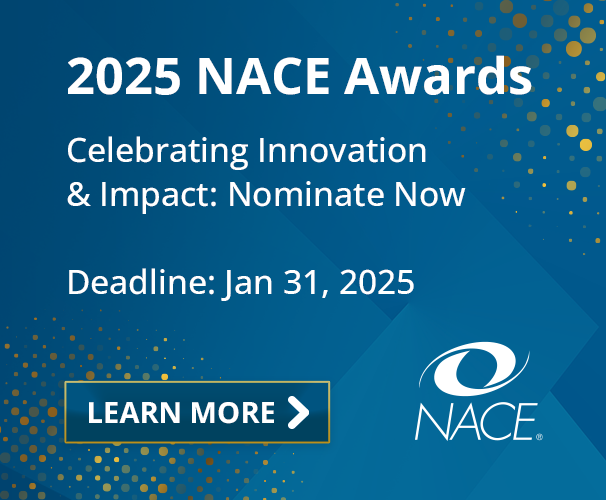NACE Journal / August 2022
News articles shout about the continuance of the “Great Resignation” or “Great Reshuffle” across all industries. As of July 2022, the U.S. Department of Labor (DOL) reported that quit rates (individuals voluntarily separating from their organization) continue to hold steady in the field of education, with more than half a million exits since the beginning of 2022.1
Ahead of the next academic year, and with jobs being posted at institutions around the country each day, it is time to reconsider how our field can retain and grow talent in more intentional, progressive ways. Traditional responses, stagnant compensation, inequitable flexibility measures, and empty promises will no longer hold educators to their institutions; it is time for radical retention practices.
Make Talent Management and Development Priority One
Hire and promote with the overall organization in mind, not just individual departments. Colleges and universities must think about hiring and retention as a strategic goal of the institution, staffing and supporting individual offices well enough so that managers can anticipate transitions and openly encourage internal movement. Even if it means a change in functional area and some adjustment for remaining team members, creating and sharing institution-wide promotion opportunities will retain talent over time, instead of people thinking they need to leave and “go to grow.” According to the Pew Research Center, a lack of opportunity for advancement was just as impactful as insufficient pay on decisions to quit in the past year.2 Retaining talent within the institution while minimizing the negative impact on specific departments will require divisions, units, and leaders to strategize, along with human resources, about transparent career pathing opportunities. For far too long, we have spoken of transferable skills and the importance of diverse perspectives to advance higher education institutions, but rarely do we demonstrate these principles by shepherding individuals into different parts of our own organizations to expand long-term impact.
Pay more and be clear about ROI. Today’s starting salaries in higher education are often too low for the cost of living in a given geographic area, and thus institutions have difficulty attracting and retaining the best talent. While NACE reports the average college graduate with a bachelor’s degree has a starting salary around $55,000, the median salary for a career adviser (often with a master’s degree at minimum) is $48,000. 3, 4 Receiving pay raises is often a nebulous year-to-year process in higher ed, dependent on state government budget decisions, donor funding contributions, fluctuating enrollment numbers, salary savings from people leaving, and/or performance reviews that may have restrictions on what kinds of ratings individuals can earn, aiming for a bell curve across departments or divisions. To combat these issues, colleges need to set salaries for staff members that are competitive in their city or region (especially for roles requiring a graduate degree), and design and share a financial plan for ensuring salary increases with strong performance each year. It is also worth noting that pay transparency is key for attracting top talent and is the equitable thing to do. Including salary ranges plainly in job postings so that candidates can make smart decisions up front, instead of having to be surprised and negotiate blindly at the offer stage, will allow for a smoother hiring experience for everyone involved. “Commensurate with experience” is not going to appeal to talented professionals looking to advance their careers, make ends meet at home, and find a longer-term professional home.
Plan for some churn and burn. Similar to industries like investment banking, management consulting, public accounting, and even comparable within residence life and housing from a higher education lens, it is reasonable to presume that new professionals may only stay in entry-level roles for one to three years—working hard and learning a lot before being ready to move up and on. In fact, a 2020 DOL study found the average tenure for any position is 4.1 years, while for employees 25 to 34 years old, it was only 2.8 years.5 Instead of wishing this were not the case, or deciding entry-level roles have to be built to last longer than the responsibilities at hand require, institutions and departments should engage in realistic conversations and succession planning, keeping supportive, open lines of communication with team members about job progression. If everyone in our field were more candid that entry-level roles are not meant to be forever, new staff will feel empowered to contribute and prove themselves as part of effectively preparing to be considered for promotions and other opportunities.
Invest in managers. According to a 2021 Harvard Business Review study, the variable with the single greatest impact on talent mobility is individual managers. 6 With this in mind, let’s consider what it would look like to create and follow more-structured management training protocols as higher education professionals move into roles that include supervision of staff, and having regular management-specific evaluations and professional development to hone those skills over time. If those who are regularly coaching and supervising other professionals are not knowledgeable about how to effectively develop staff and communicate options for advancement, talent will naturally begin to look elsewhere to grow their career and feel inspired. However, if managers are operating at their best, they can make an immeasurable impact not only on employee retention but also on organizational reputation ahead of future recruitment.
Lean Into the Values of Millennial and Gen Z Employees
Double down on meaningful, mission-driven work. Considering Millennial and Gen Z employees (individuals currently in their 20s to 40s) now total approximately 40% of the workforce,7 it is critical that institutions make the “why” and level of individual impact clear. So often in higher ed we are asked to do more with less, and one program, project, or season of work blends into the next without recognition or reprieve. To see a long-term future in the field, staff members want and need reminders of whom they are putting in so much effort to impact; why their work matters to their supervisor(s), department, division, and institution; and how their own values align with the core values of the institution. People can always pivot their talents to the private sector, but if they are primarily motivated by helping people (true for many drawn to working in education), there is an opportunity to retain them by staying true to that North Star (paired with advancement and competitive compensation, of course). Similarly, institutions supporting individualized community service engagement, providing charity-of-choice donation opportunities as a type of spot bonus, and creating recognition and reward opportunities throughout the year can help reinforce personal connections with a college’s mission, vision, and values.
Enable as much remote work as possible. The secret is out for this group of digital natives: Commuting and paying to park on campus just to sit in an office all day with shared kitchens and restrooms is not as good as getting to wear whatever pants you want and drinking your coffee hot while concurrently blazing through emails and projects with efficiency. Although there is something to be said for the social/community aspect of being on campus, peak COVID times taught many of us how to develop and maintain relationships virtually, hosting everything from trivia competitions and happy hours to group training sessions and conferences over Zoom and other systems. If team members feel more productive and happy working from home, let them. Make it easy and customizable, providing equity based on individual interests and productivity. Learn from all that we accomplished and piloted in 2020 and 2021 so that what is offered in-person really needs to be and is a benefit, versus making blanket rules and policies. Track and make data-informed decisions based on student and visitor usage and engagement. Listen to your team, and you may just find that having equitable flexibility measures is the key to keeping people happy within your office or institution for many years to come. Focus on results and performance, letting the “how,” “where,” and “when” be more flexible to meet individual needs, and allow yourself to be pleasantly surprised—like in spring and summer 2020—when the world keeps turning and work actually gets done.
Prove you value individuals’ lives outside of work. Today’s employers need to be intentional in their efforts to honor diversity, prioritize equity, and be proactive in their inclusion practices to recruit and retain employees at all levels. Stretch beyond required training and talking about values and create tangible opportunities for work-life balance benefits like discounted or on-campus childcare, caregiving leave, and more transparent work-life policies and procedures overall. Support team members holistically by offering tuition benefits beyond the employed individual, extending to children, spouses/partners, or even their parents. Consider additional perks, such as allowing pets on campus and providing information and resources regarding elder care, retirement matching, and institution-specific paid family leave (especially if not offered by your state). Consider shortening the workday or work week to flex hours around team members’ external needs and priorities: Haven’t we learned by now that great work doesn’t only occur Monday through Friday between the hours of 8 a.m. and 5 p.m.? Leaders should also encourage open communication around any current norms of emailing and messaging “after hours” (whatever they may be for the individual), helping staff set and maintain boundaries and avoiding burnout. Any or all of these strategies can go a long way to helping team members envision how they can integrate work and life in a sustainable way over time, without the need to leave an institution to find support for their various—and often competing—life roles.
Break down silos and remove barriers to innovation. Seeing oneself as an integral part of a college or university community is key; this could be as simple as not feeling alone—or as energizing as feeling supported to try out ideas for how to better support students, staff, and other stakeholders. Consider how to create interpersonal connection opportunities, which are key to an engaged workforce. Practice transparency and authenticity—and this includes senior leaders—and consider offering funding opportunities that encourage collaboration across departments, disciplines, and roles. Though it may be difficult at first, ideally institutions can focus less on departmental territories and more on common ground, welcoming ideas and pilot programs from both new and seasoned employees. Institutions have prioritized innovation and interdisciplinary collaboration for and via students for years, so it is time to mirror those policies and opportunities in support of faculty and staff as they seek to contribute in new ways.
Find Alignment Between the Needs of Your Employees and the Students You Recruit and Serve
Students want opportunities to make friends, find mentors, and build community. Student-staff connection opportunities are crucial for making this happen. This can happen through advising relationships, events and programs, staff-taught courses, and mentorship programs. However, staff member transitions do impact students, so finding ways to retain and grow team members in their roles, or at least providing students and other stakeholders with consideration and other means of consistency as individuals move up and across the institution, can minimize negative effects. Creating community spaces and programs, as well as local community engagement opportunities, can also help provide students with opportunities to connect with staff members outside of formal settings. Reward and recognize staff members who make the effort to connect with students in new and genuine ways, while also considering how work hours may need to adjust to accommodate the extra investment of time and energy. Additionally, seeing that staff members are happy working at an institution may create stronger pathways for students and alumni to want to come back and work for your college or university—another recruitment and retention strategy.
Students want robust virtual services and engagement options. Staff are not the only ones who benefitted from student services pivoting to virtual engagement and considering how to better “meet students where they are.” Now that students have experienced the convenience of getting to meet with their advisers or attend programs and information sessions virtually (versus finding and paying for parking and making time between classes or their own professional and personal commitments), many will want to see those options continue to be offered on a regular basis. Of course, there will always be students who want to meet or attend sessions in person, but the increase in access to students who may never otherwise set foot in our career centers makes it well worth thinking through how to make hybrid work. Additionally, the ability to record, transcribe, and share program content online for 24/7 viewing opens doors and honors the fact that students don’t live by an 8 a.m. to 5 p.m. schedule, while not overstretching staff capacity. By promoting remote work and innovative cross-functional programs and services, staff can continue to support students and find desired flexibility in their jobs. Student and employee needs do not have to be mutually exclusive.
*****
Employment changes are hardly a new phenomenon, but never in our history has such a monumental societal shift happened after a period of collective and intense self-reflection about the roles people hold as humans and employees. We have a new lexicon and shared understanding—WFH, Zoom and Teams, muting and unmuting, camera on/off for meetings, hybrid events and operations, and flexible work arrangements. Not only can we not pretend the workplace in higher education and beyond isn’t forever changed, but we shouldn’t want to if we really care about our employees holistically. As millions of individuals look to make a values-based professional change, it is imperative that higher education not merely sit back and comment, but also take action and draw a new and more forward-thinking line in the sand. Radical change to retain talent is imperative, not only for our field, but for our students who deserve consistent support from engaged, dedicated, skilled advisers, instructors, administrators, and professionals, however they choose to engage with our institutions.
Endnotes
1 U.S. Bureau of Labor Statistics (2022, July 6). Job Openings and Labor Turnover Summary. Retrieved from www.bls.gov/news.release/jolts.nr0.htm.
2 Parker, K., and Horowitz, J.M. (2022, March 9). Majority of Workers Who Quit a Job in 2021 Cite Low Pay, No Opportunities for Advancement, Feeling Disrespected. Pew Research Center. Retrieved from www.pewresearch.org/fact-tank/2022/03/09/majority-of-workers-who-quit-a-job-in-2021-cite-low-pay-no-opportunities-for-advancement-feeling-disrespected/.
3 Gray, K. (2022, January 10). Salary Projections for Class of 2022 Bachelor’s Grads a Mixed Bag. National Association of Colleges and Employers. Retrieved from www.naceweb.org/job-market/compensation/salary-projections-for-class-of-2022-bachelors-grads-a-mixed-bag/.
4National Association of Colleges and Employers (May 2022). NACE 2021-22 Career Services Compensation Report. Retrieved from www.naceweb.org/store/2022/career-services-compensation-report/.
5 U.S. Bureau of Labor Statistics (2020, September 22). Employee Tenure in 2020. Retrieved from www.bls.gov/news.release/pdf/tenure.pdf.
6 Oakes, K. (2021, August 20). Let Your Top Performers Move Around the Company. Harvard Business Review. Retrieved from https://hbr.org/2021/08/let-your-top-performers-move-around-the-company.
7 Miller, L.J., and Lu, W. (2018, August 20). Gen Z Is Set to Outnumber Millennials Within a Year. Bloomberg. Retrieved from www.bloomberg.com/news/articles/2018-08-20/gen-z-to-outnumber-millennials-within-a-year-demographic-trends.




